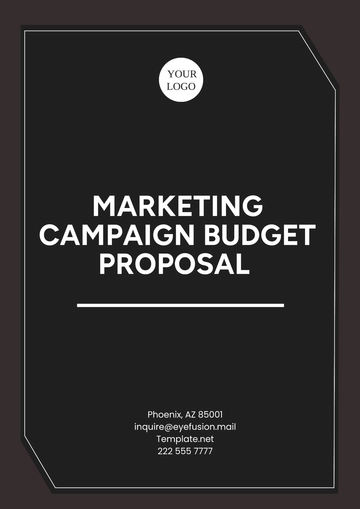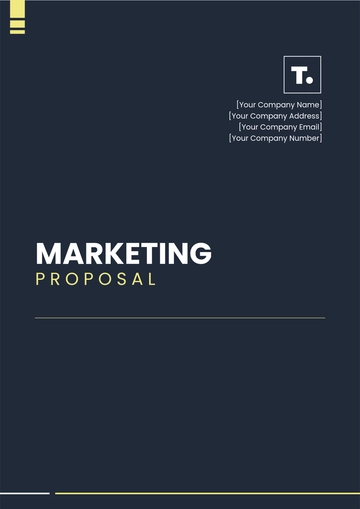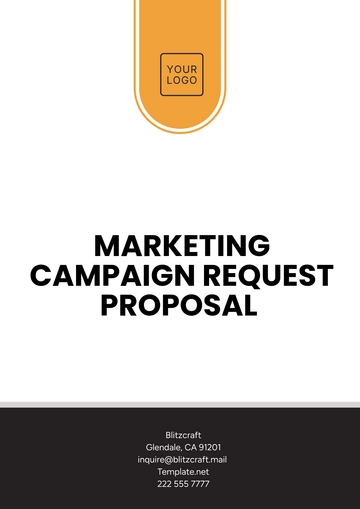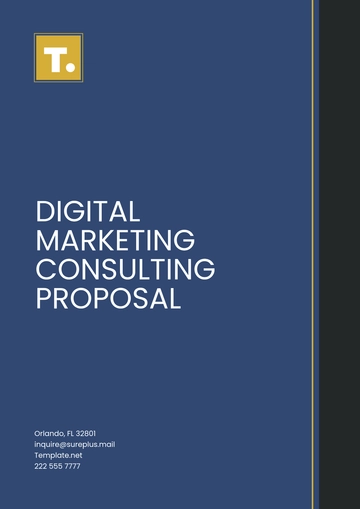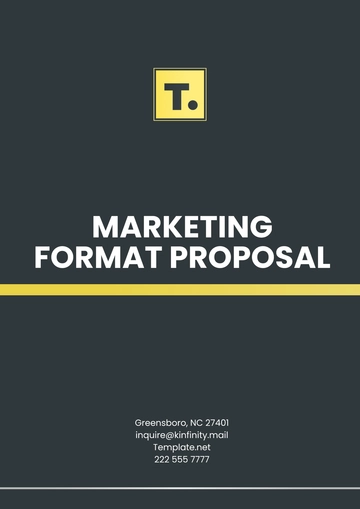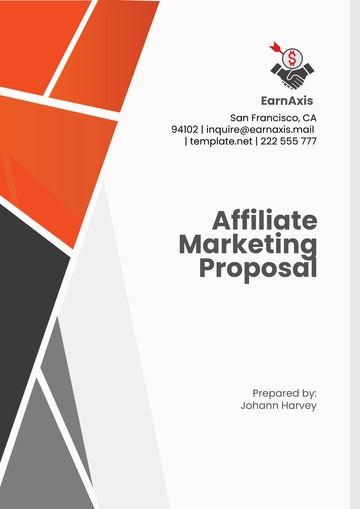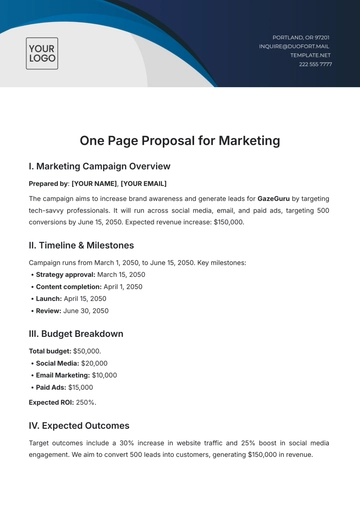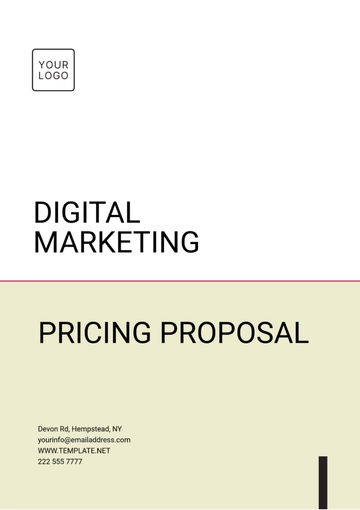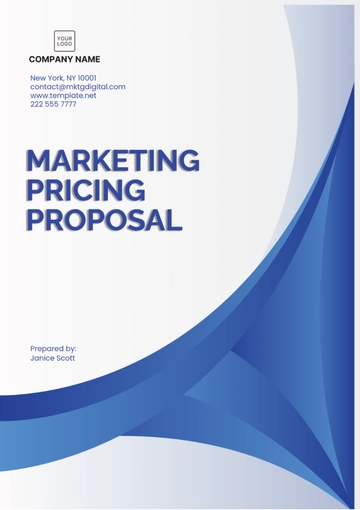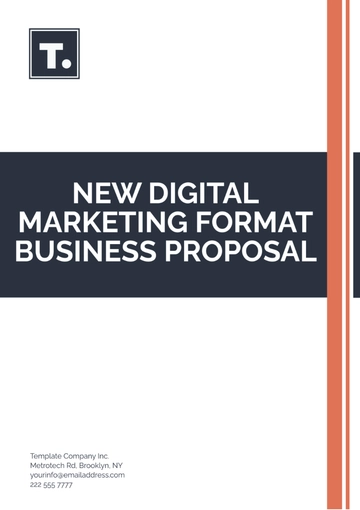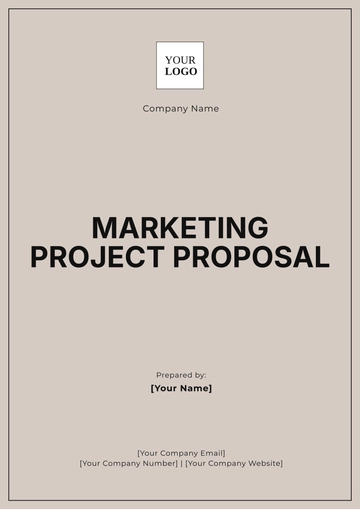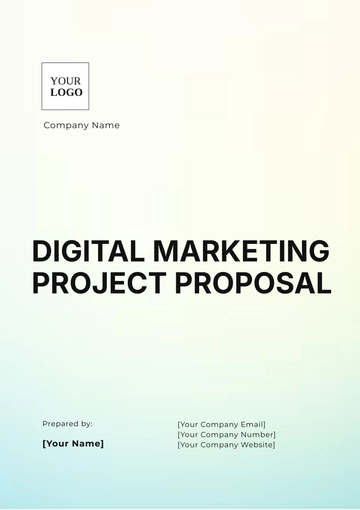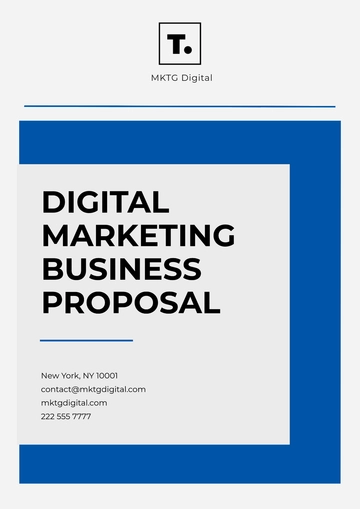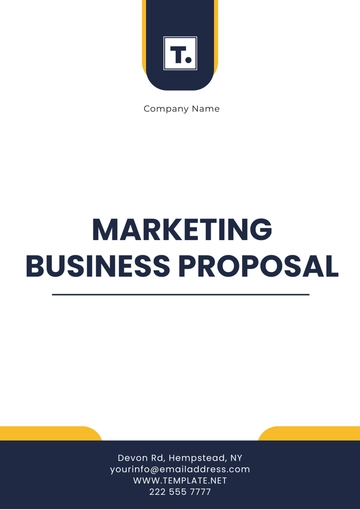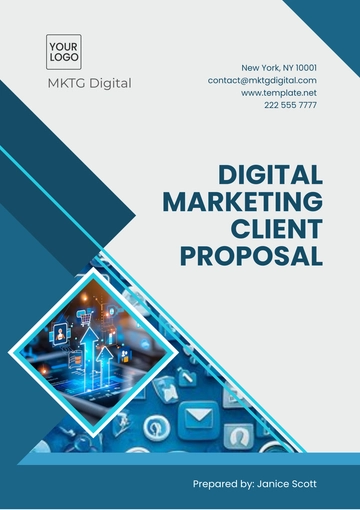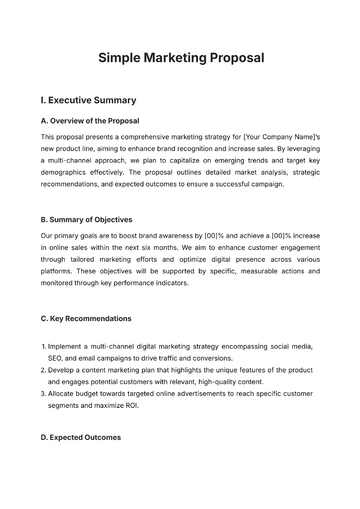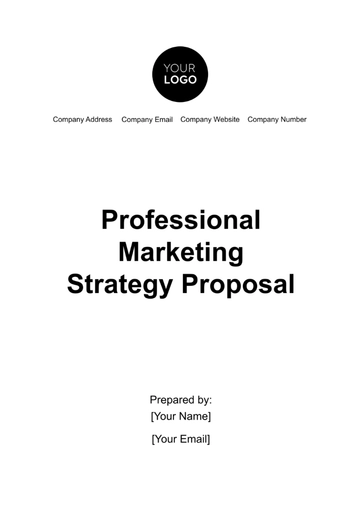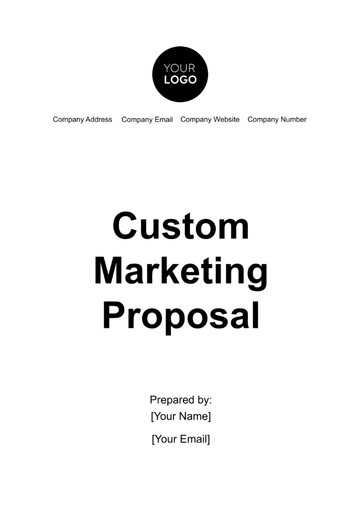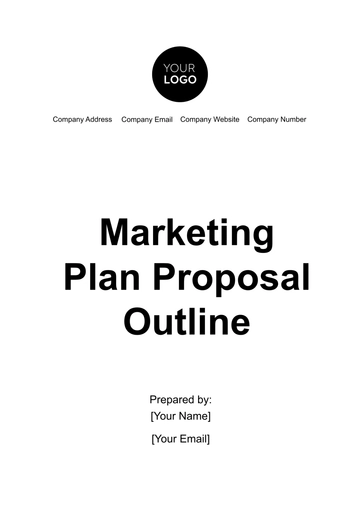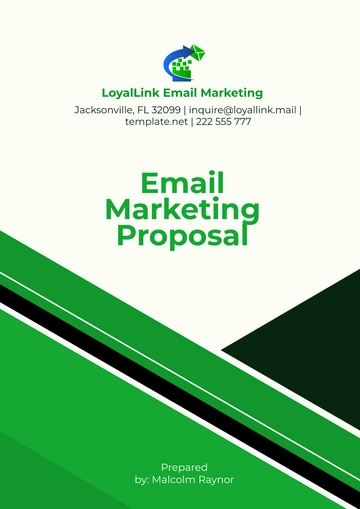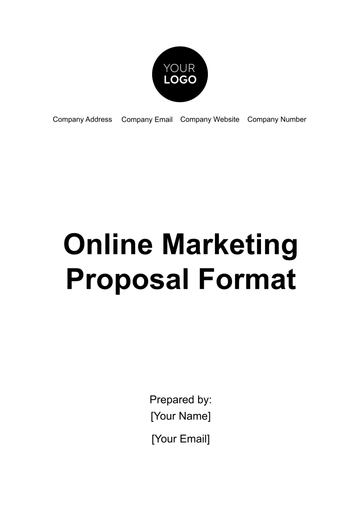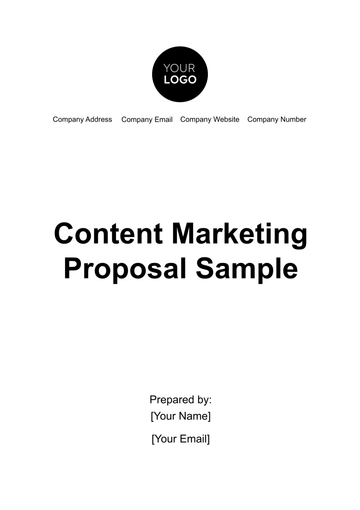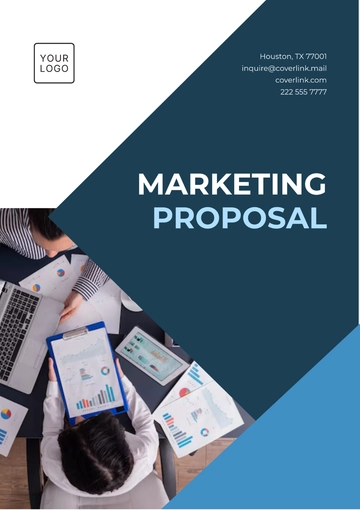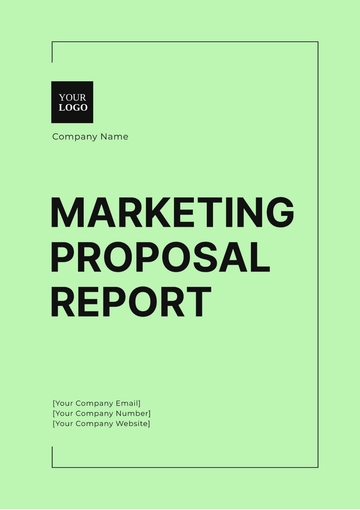Free Brand Marketing Advertising Proposal Outline
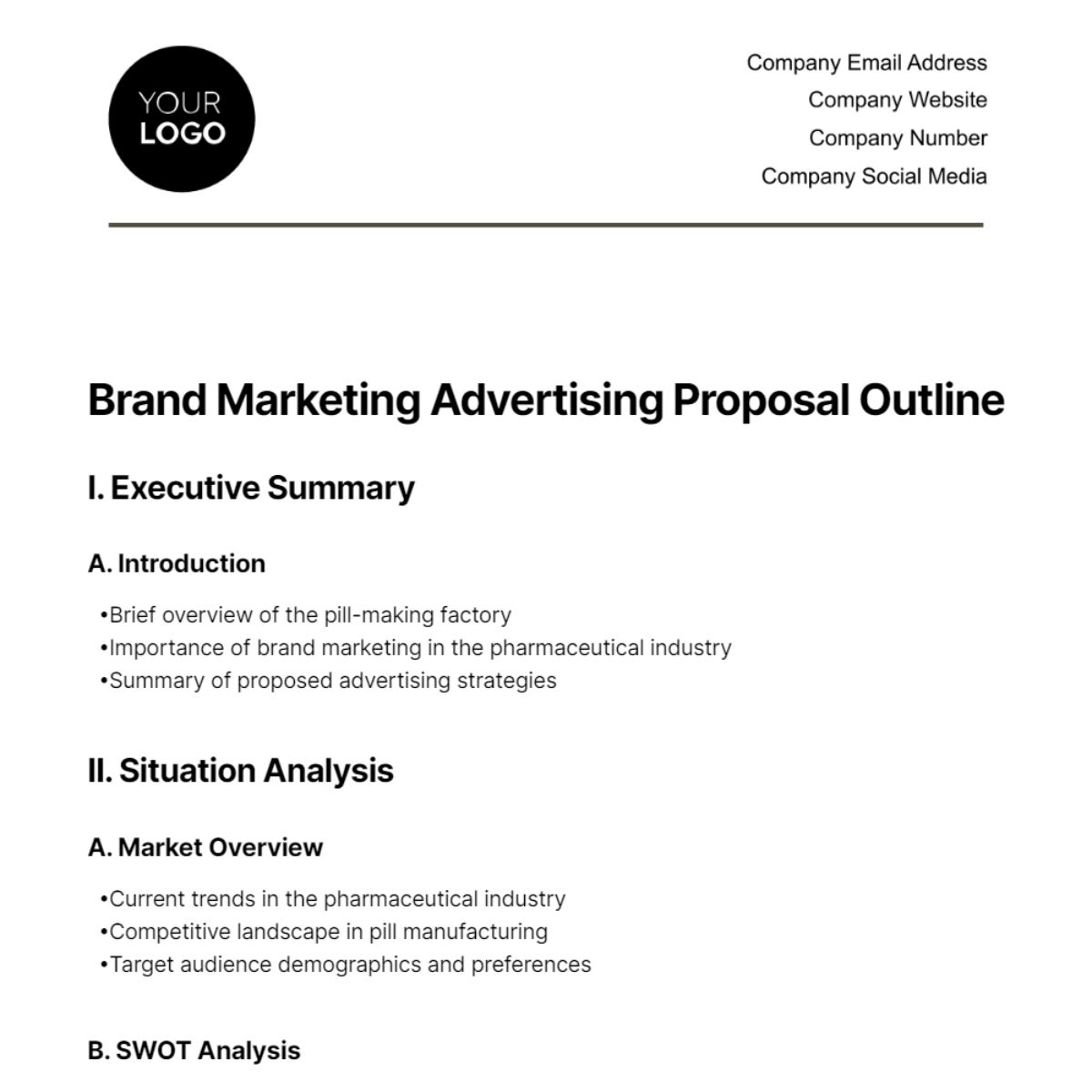
I. Executive Summary
A. Introduction
Brief overview of the pill-making factory
Importance of brand marketing in the pharmaceutical industry
Summary of proposed advertising strategies
II. Situation Analysis
A. Market Overview
Current trends in the pharmaceutical industry
Competitive landscape in pill manufacturing
Target audience demographics and preferences
B. SWOT Analysis
Strengths: Cutting-edge technology, experienced team
Weaknesses: Limited brand awareness, potential market saturation
Opportunities: Emerging markets, new product development
Threats: Regulatory changes, competition from established brands
III. Campaign Objectives
A. Primary Objectives
Increase brand awareness by [30%] within [October 2050]
Boost sales of flagship products by [20%]
Position the pill-making factory as an industry innovator
B. Secondary Objectives
Establish a strong online presence
Foster customer loyalty through promotional campaigns
Gather customer feedback for continuous improvement
IV. Target Audience
A. Demographics
Age: [25-65]
Gender: [Male and female]
Geographic location: Nationwide
B. Psychographics
Health-conscious individuals
Those seeking innovative pharmaceutical solutions
V. Creative Strategy
A. Brand Positioning
Emphasize the factory's commitment to quality and innovation
Highlight the scientific expertise behind pill manufacturing
B. Key Message
"Empowering Health Through Innovation"
Communicate the factory's dedication to improving lives
VI. Advertising Channels
A. Digital Marketing
Social media campaigns on major platforms
Targeted online advertisements
B. Traditional Media
Television commercials during prime time
Print advertisements in health and lifestyle magazines
C. Events and Sponsorships
Participation in health expos and trade shows
Sponsorship of community health initiatives
VII. Budget Allocation
A. Digital Marketing
Social media ads: [40%]
Online banners: [20%]
B. Traditional Media
TV commercials: [25%]
Print ads: [15%]
C. Events and Sponsorships
Expos and trade shows: [10%]
Community sponsorships: [5%]
VIII. Measurement and Evaluation
A. Key Performance Indicators (KPIs)
Social media engagement
Sales data and revenue growth
Brand sentiment and awareness surveys
B. Evaluation Methods
Regular analytics reports from digital platforms
Post-campaign surveys and feedback analysis
IX. Timeline
A. Pre-Campaign Preparation (September 2050)
Finalize creative materials
Secure media placements
B. Campaign Launch (October 2050)
Implement digital and traditional advertising
Activate event and sponsorship commitments
C. Post-Campaign Analysis (November 2050)
Evaluate campaign effectiveness
Adjust strategies based on performance
X. Conclusion
A. Recap of Proposal
Reiteration of campaign objectives
Expression of commitment to achieving success
Prepared By:
[Your Name]
[Your Job Title]
- 100% Customizable, free editor
- Access 1 Million+ Templates, photo’s & graphics
- Download or share as a template
- Click and replace photos, graphics, text, backgrounds
- Resize, crop, AI write & more
- Access advanced editor
Introducing the Brand Marketing Advertising Proposal Outline Template available on Template.net! Craft winning proposals that captivate clients and stakeholders. Editable and customizable, tailor it to your brand's needs effortlessly. With our Ai Editor Tool, editing is a breeze, allowing you to create polished proposals that drive success in the competitive marketing landscape.
You may also like
- Business Proposal
- Research Proposal
- Proposal Request
- Project Proposal
- Grant Proposal
- Photography Proposal
- Job Proposal
- Budget Proposal
- Marketing Proposal
- Branding Proposal
- Advertising Proposal
- Sales Proposal
- Startup Proposal
- Event Proposal
- Creative Proposal
- Restaurant Proposal
- Blank Proposal
- One Page Proposal
- Proposal Report
- IT Proposal
- Non Profit Proposal
- Training Proposal
- Construction Proposal
- School Proposal
- Cleaning Proposal
- Contract Proposal
- HR Proposal
- Travel Agency Proposal
- Small Business Proposal
- Investment Proposal
- Bid Proposal
- Retail Business Proposal
- Sponsorship Proposal
- Academic Proposal
- Partnership Proposal
- Work Proposal
- Agency Proposal
- University Proposal
- Accounting Proposal
- Real Estate Proposal
- Hotel Proposal
- Product Proposal
- Advertising Agency Proposal
- Development Proposal
- Loan Proposal
- Website Proposal
- Nursing Home Proposal
- Financial Proposal
- Salon Proposal
- Freelancer Proposal
- Funding Proposal
- Work from Home Proposal
- Company Proposal
- Consulting Proposal
- Educational Proposal
- Construction Bid Proposal
- Interior Design Proposal
- New Product Proposal
- Sports Proposal
- Corporate Proposal
- Food Proposal
- Property Proposal
- Maintenance Proposal
- Purchase Proposal
- Rental Proposal
- Recruitment Proposal
- Social Media Proposal
- Travel Proposal
- Trip Proposal
- Software Proposal
- Conference Proposal
- Graphic Design Proposal
- Law Firm Proposal
- Medical Proposal
- Music Proposal
- Pricing Proposal
- SEO Proposal
- Strategy Proposal
- Technical Proposal
- Coaching Proposal
- Ecommerce Proposal
- Fundraising Proposal
- Landscaping Proposal
- Charity Proposal
- Contractor Proposal
- Exhibition Proposal
- Art Proposal
- Mobile Proposal
- Equipment Proposal
- Student Proposal
- Engineering Proposal
- Business Proposal

